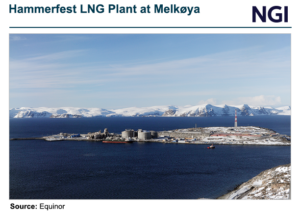NGI All News Access | E&P | International | Oil
U.S. Crude Production Edges Higher Along with Demand; Biden to Tap Reserves Again
© 2024 Natural Gas Intelligence. All rights reserved.
ISSN © 2577-9877 | ISSN © 2158-8023 |

LNG
NO. 1: A gas leak at the Hammerfest LNG export terminal in Norway that occurred during maintenance has shut the plant down until Friday. The facility, which is operated by Equinor ASA was evacuated Tuesday, and the leak has since been stopped. The cause is under investigation. Hammerfest is Europe’s only large-scale export terminal. It…
April 25, 2024Earnings
By submitting my information, I agree to the Privacy Policy, Terms of Service and to receive offers and promotions from NGI.